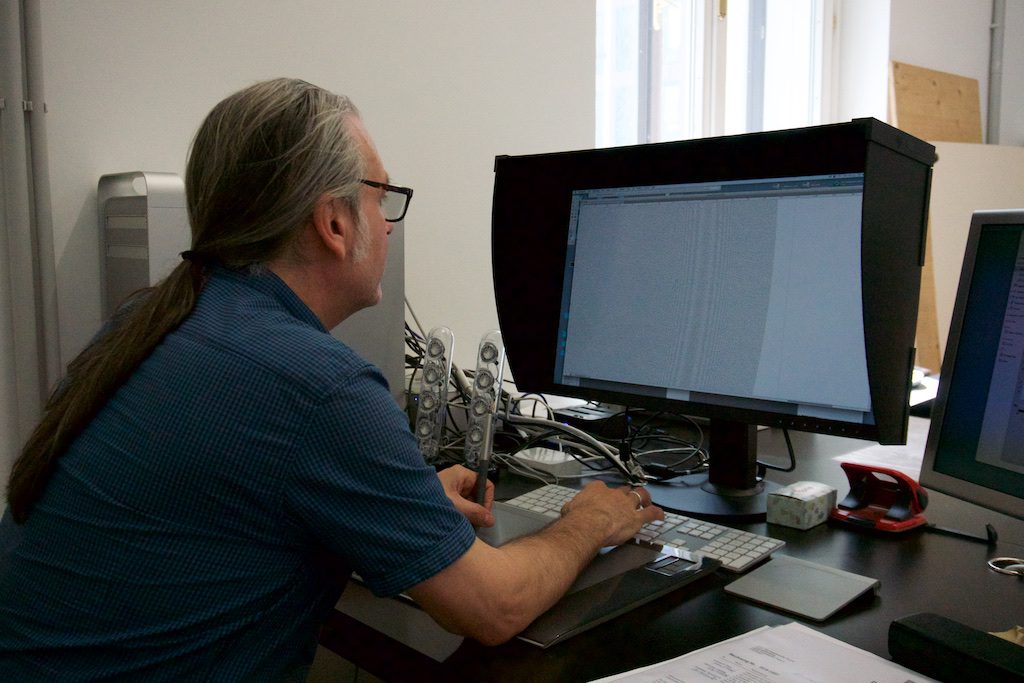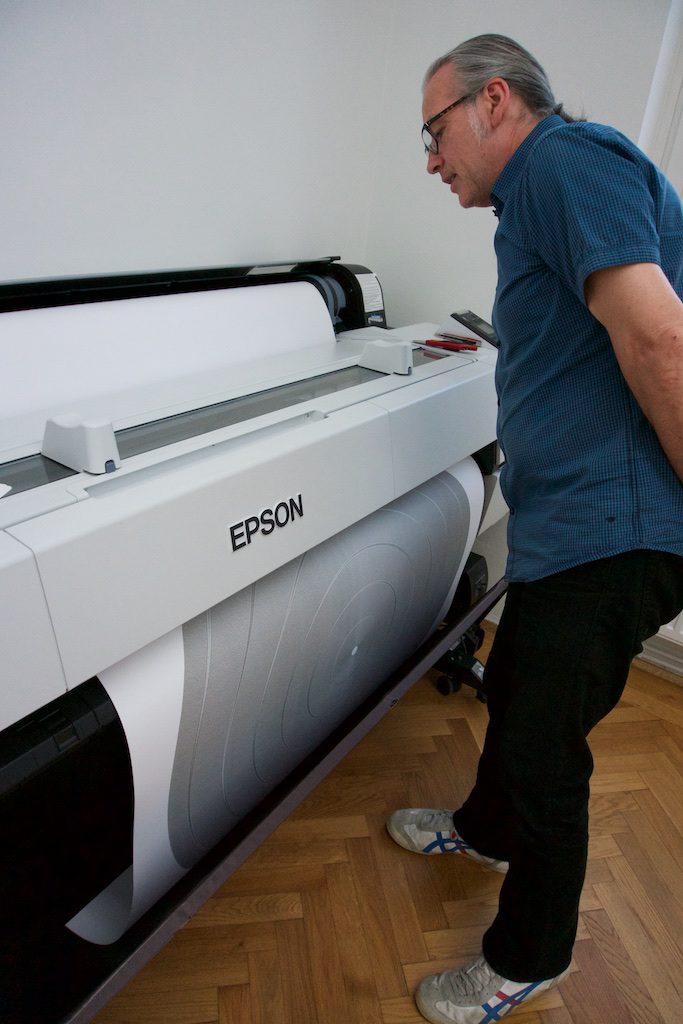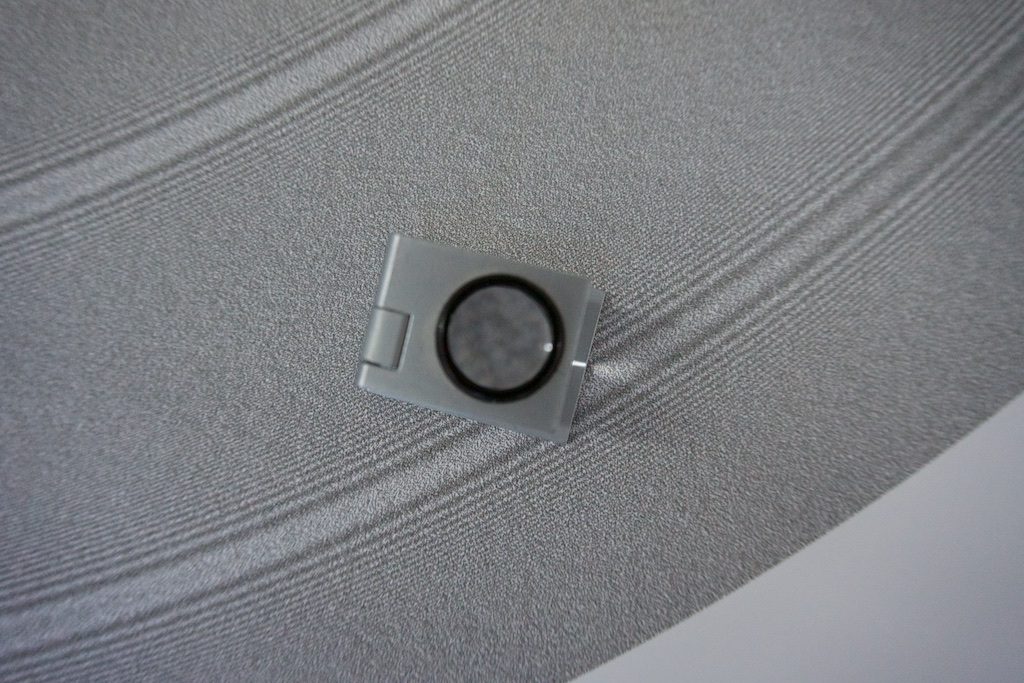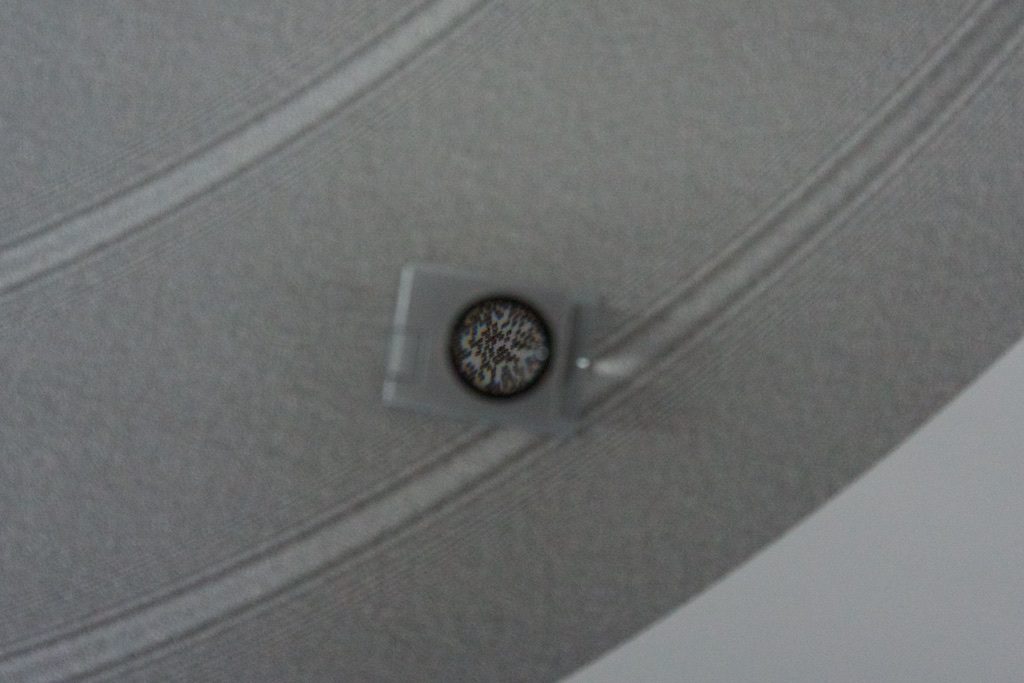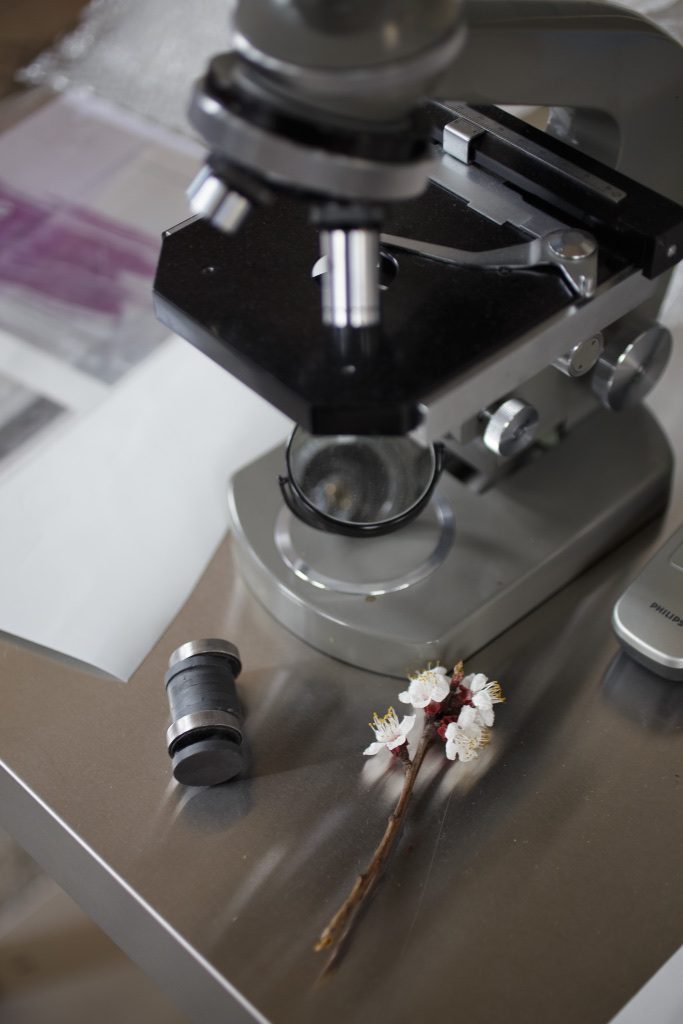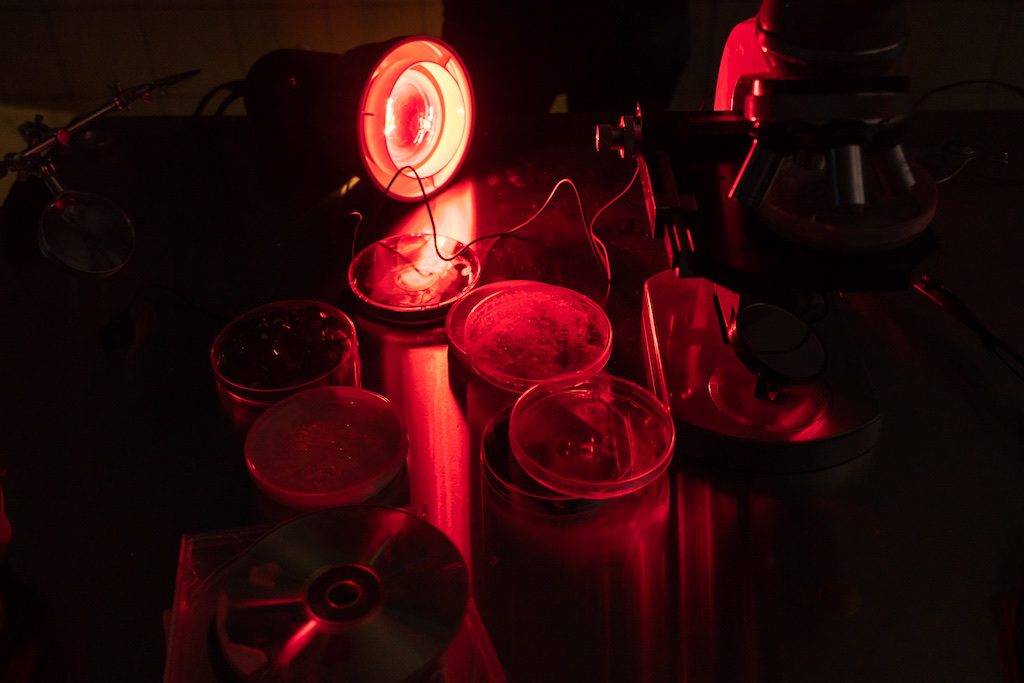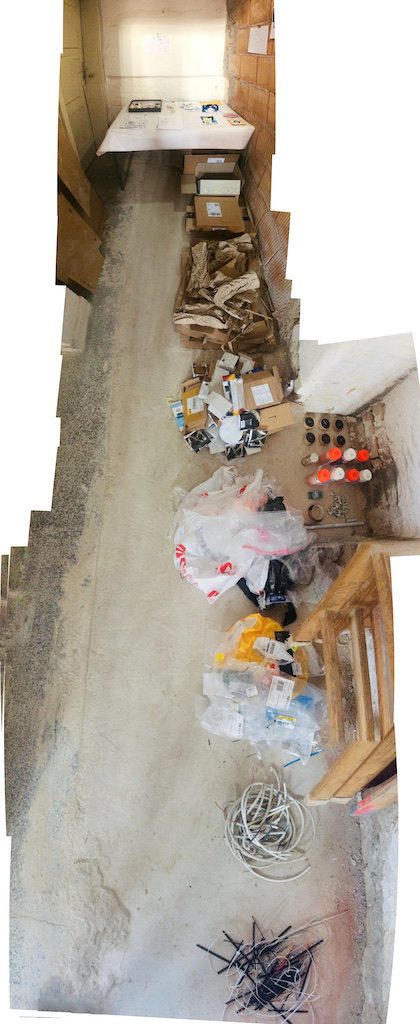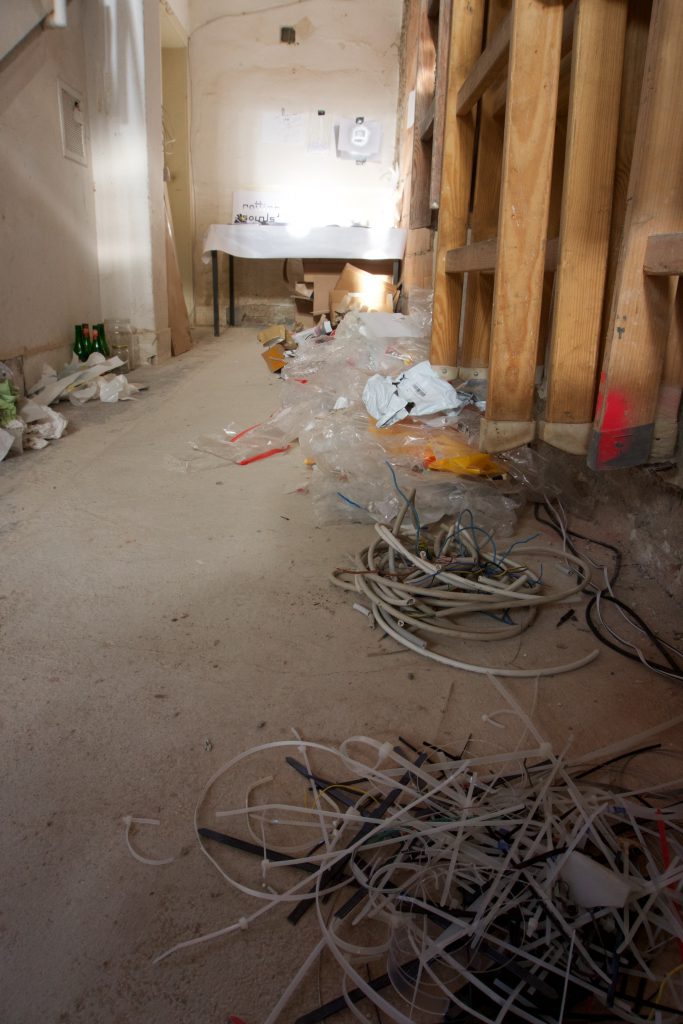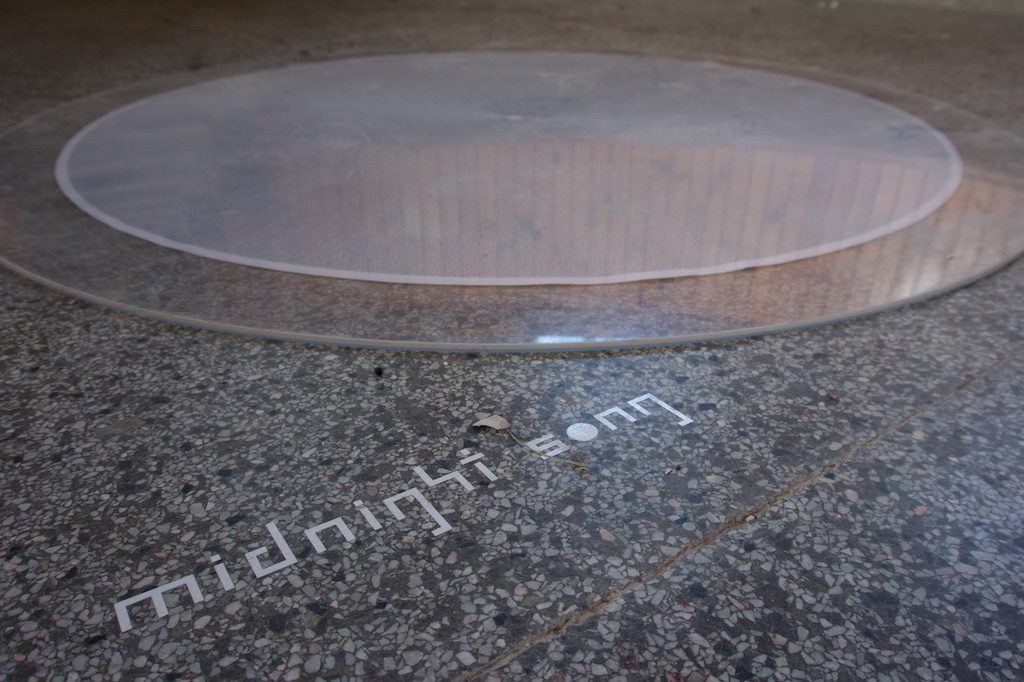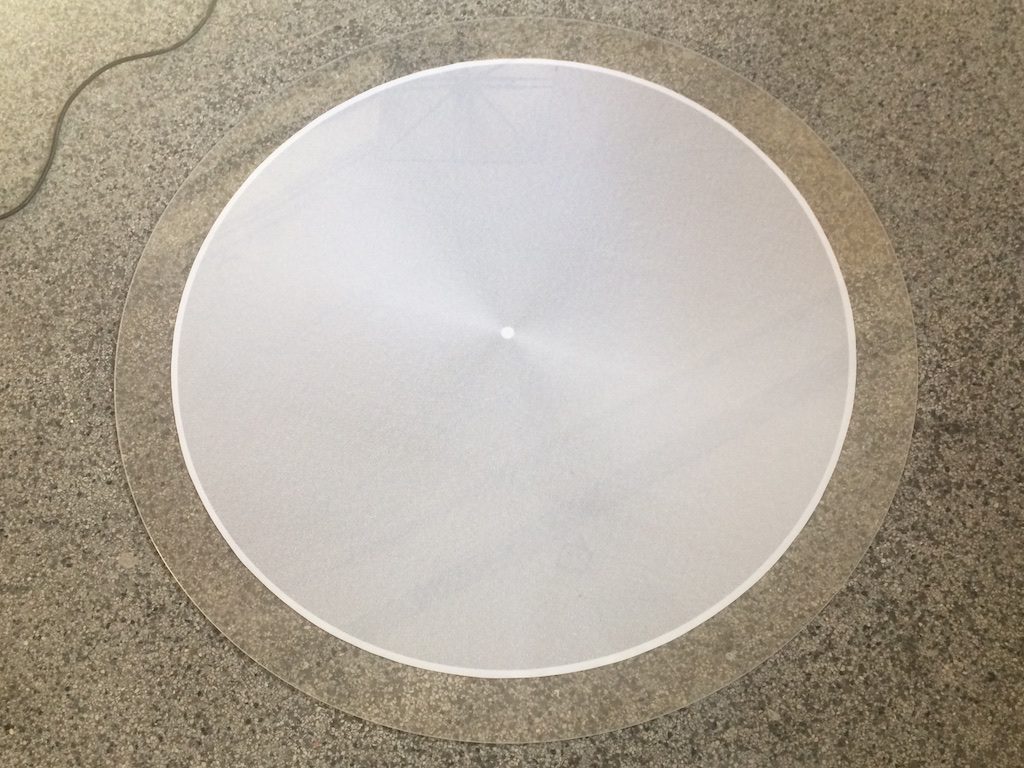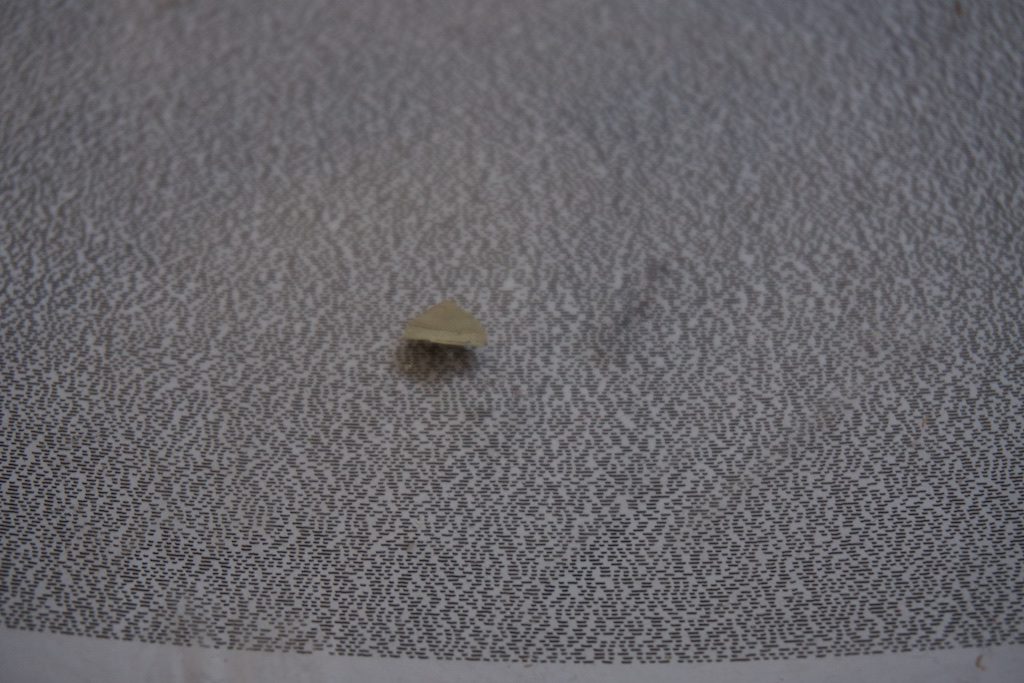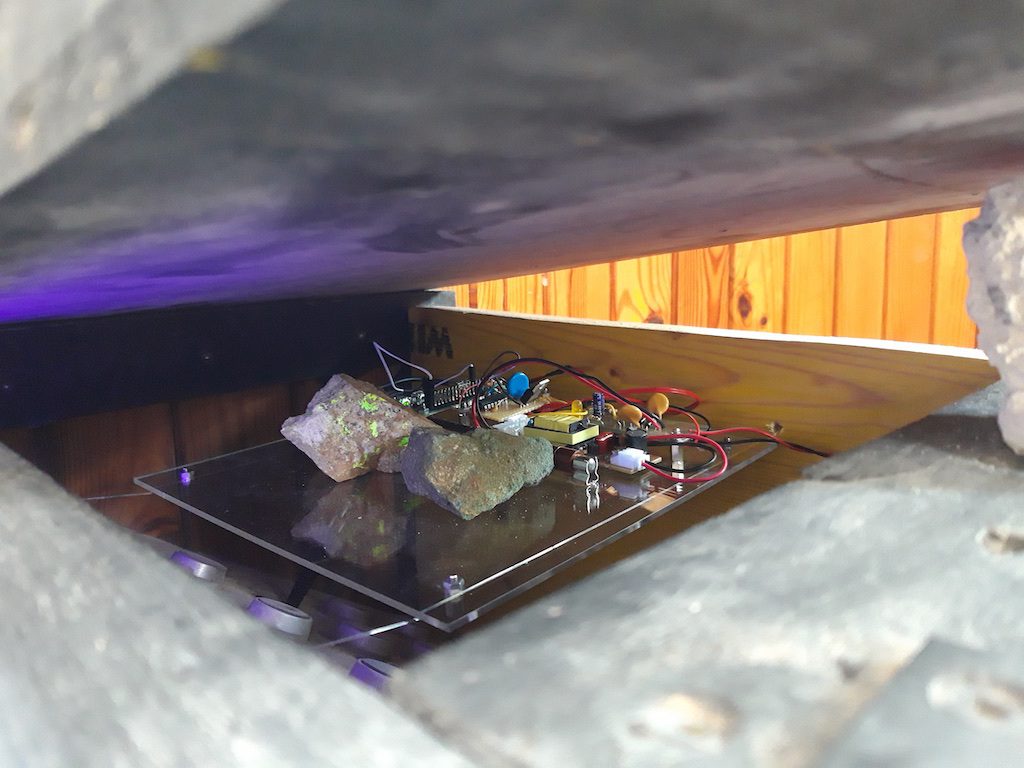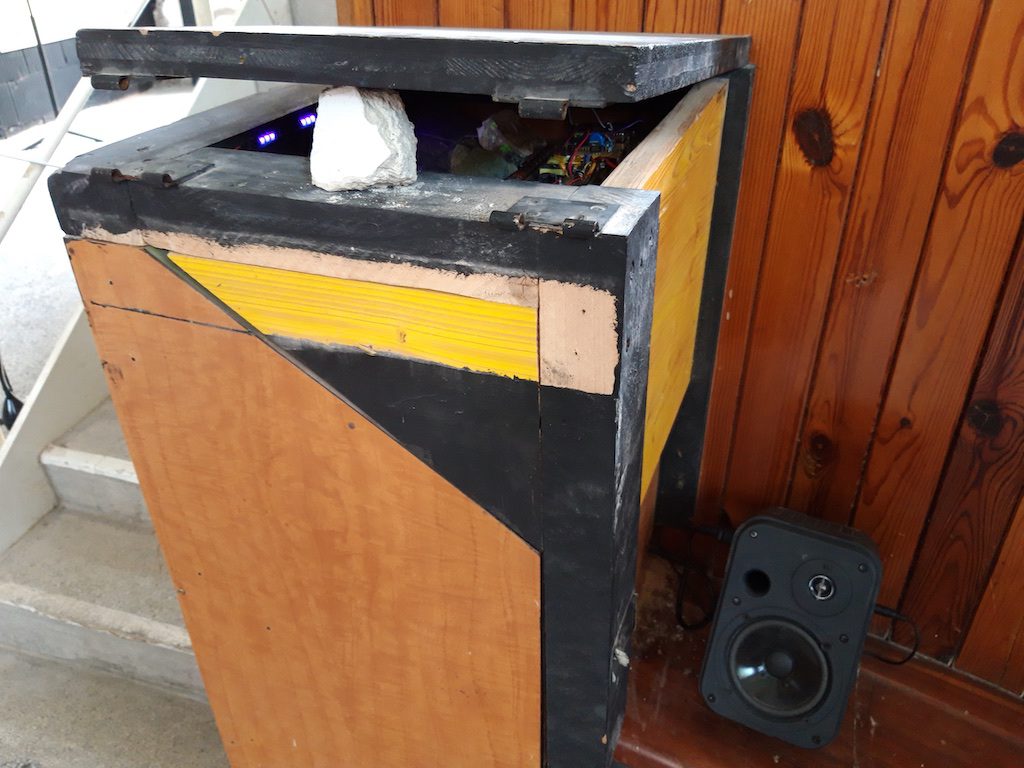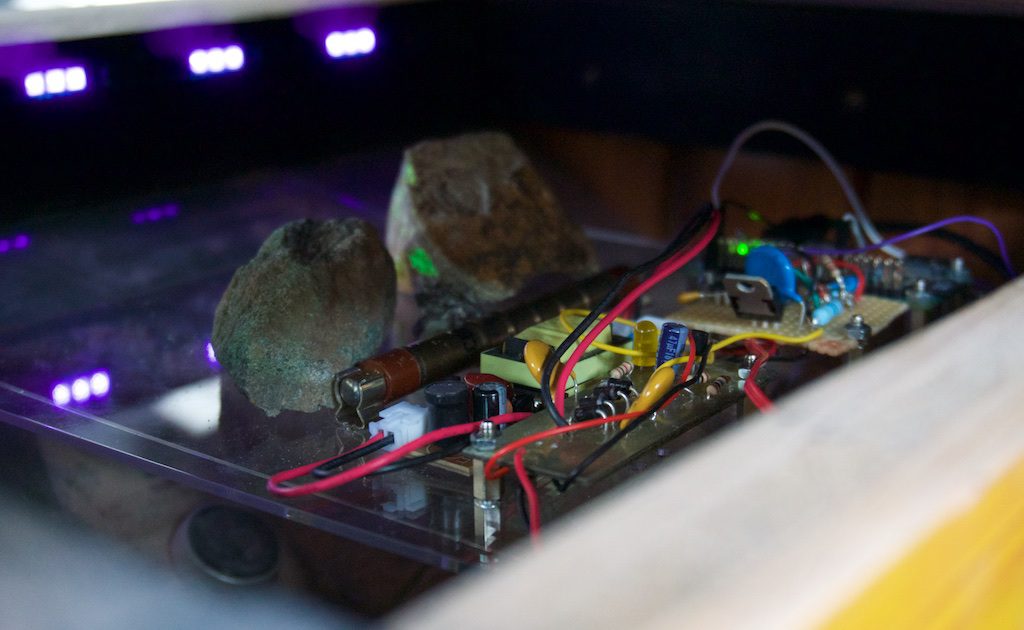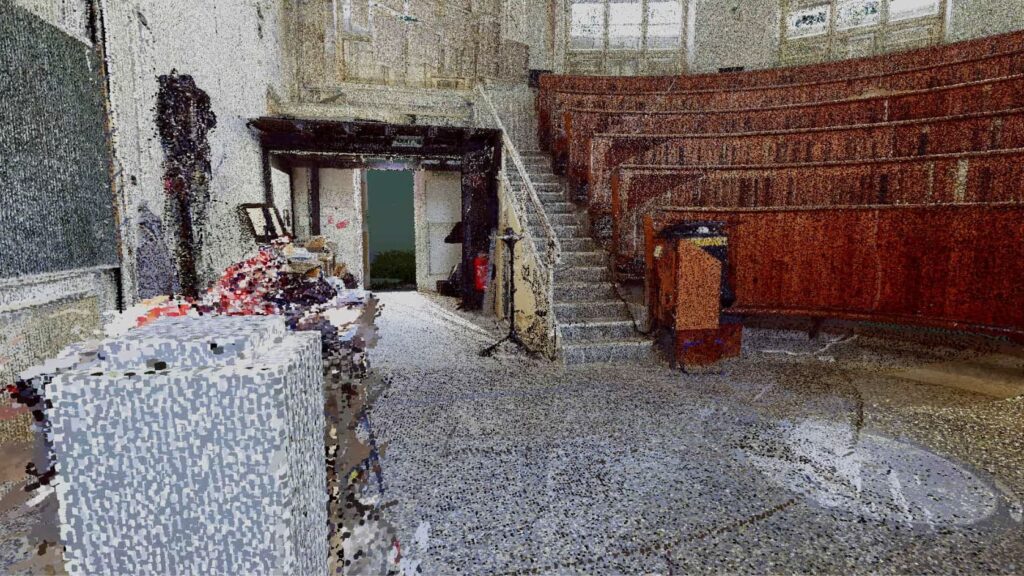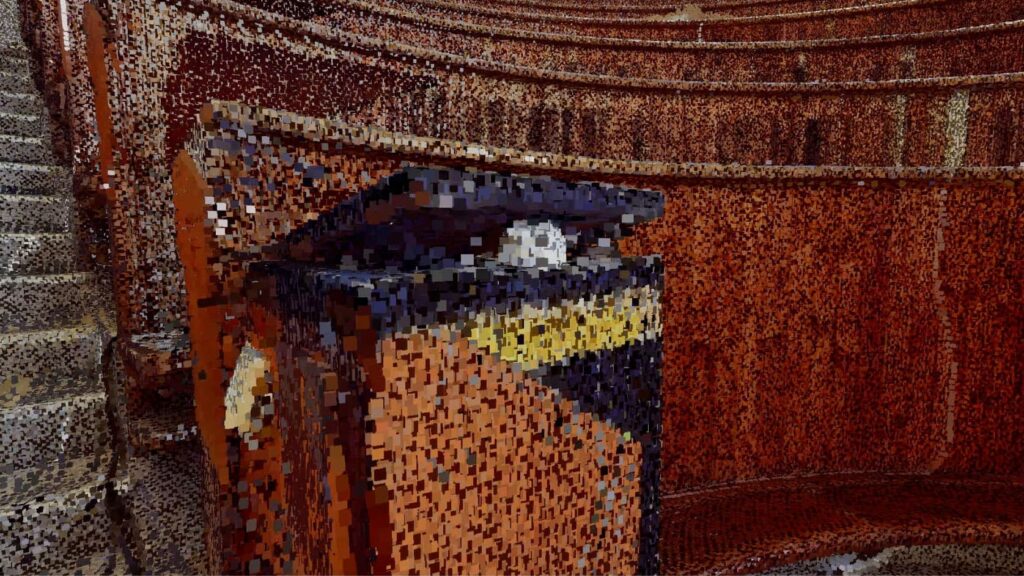Search Results for: auditorium
“Fragments” performance evening
Some impressions of the “Fragments” performance evening that took place on October 2, 2019 at the Auditorium for Rotting Sounds, featuring Tobias Leibetseder, Angélica Castelló, Elisabeth Flunger and Thomas Grill.
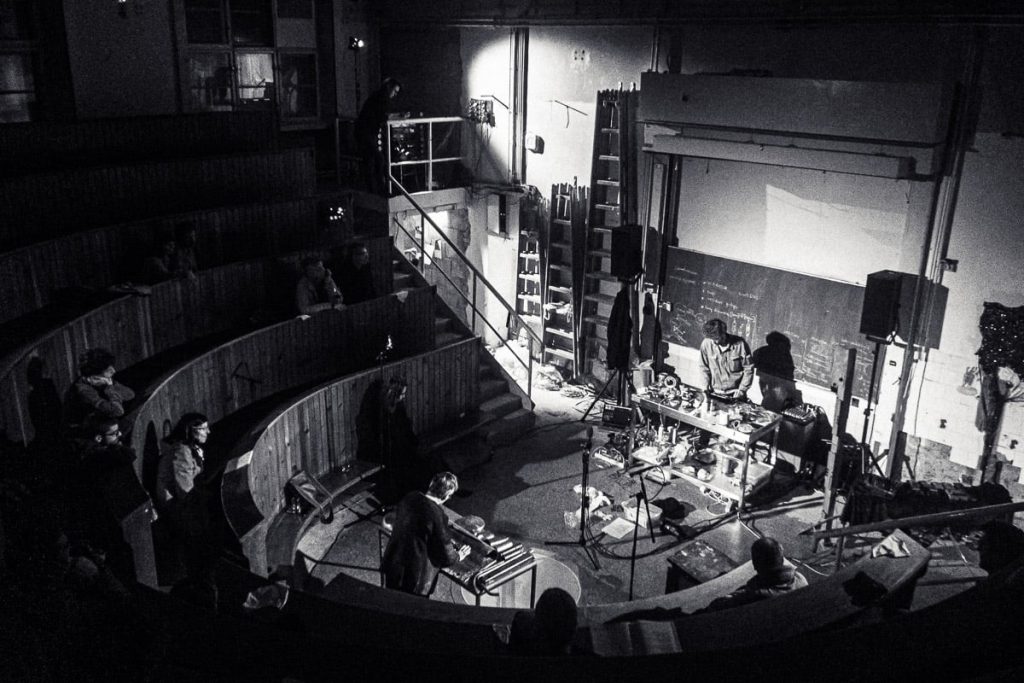
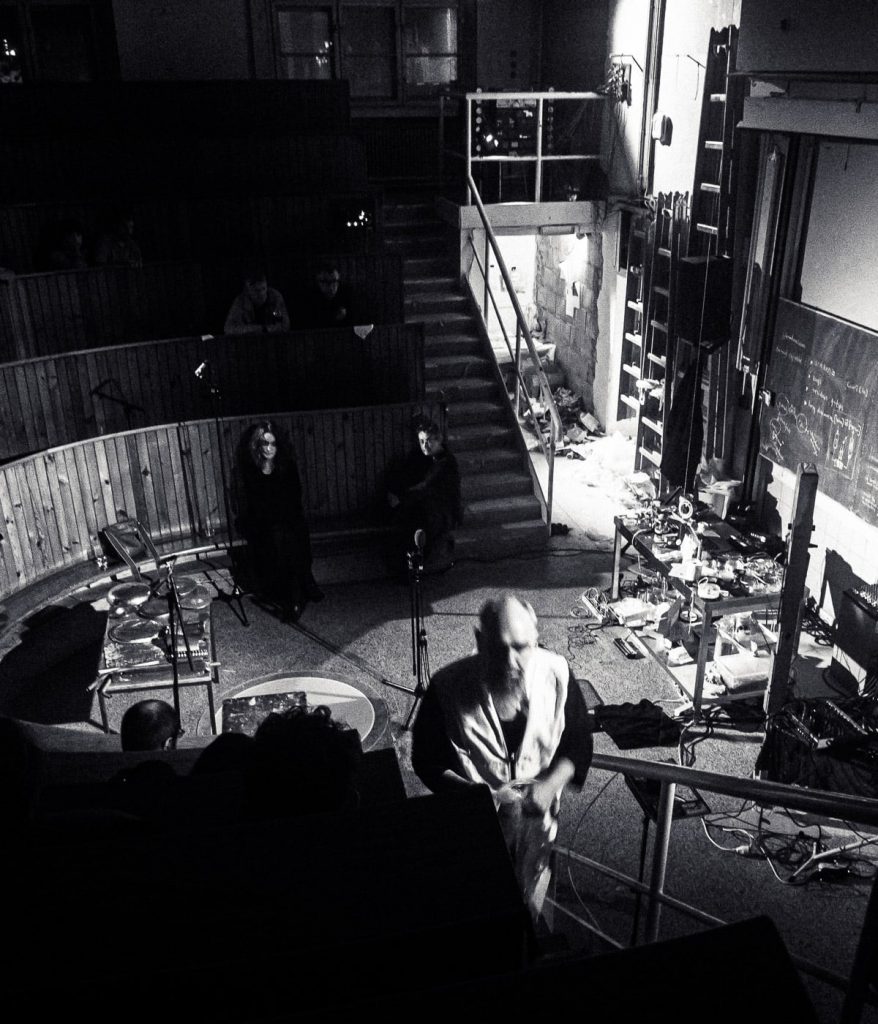
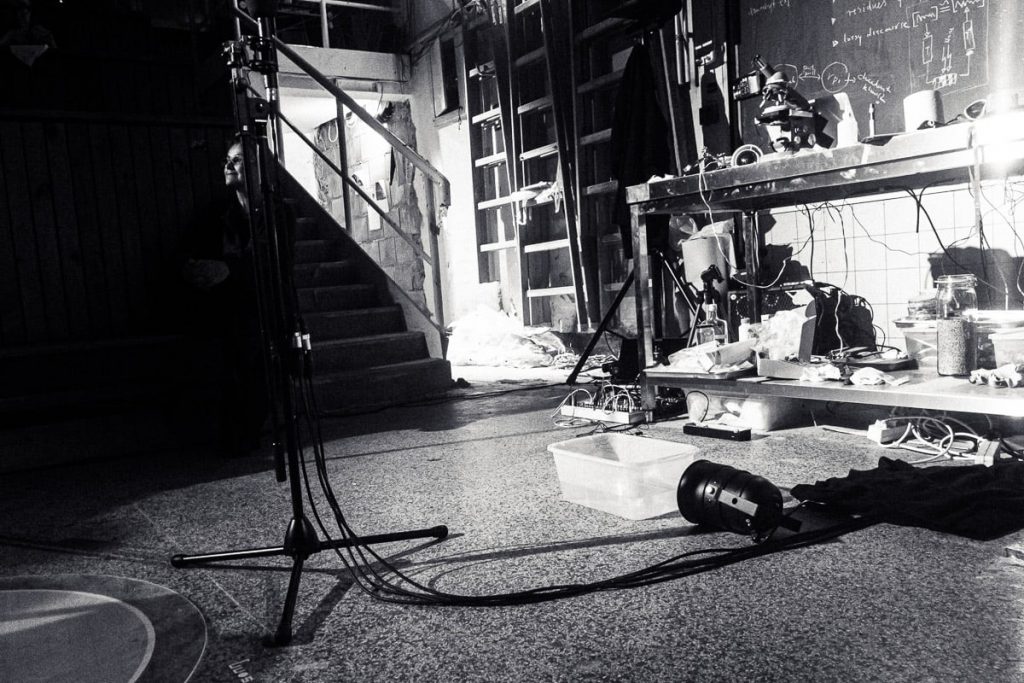
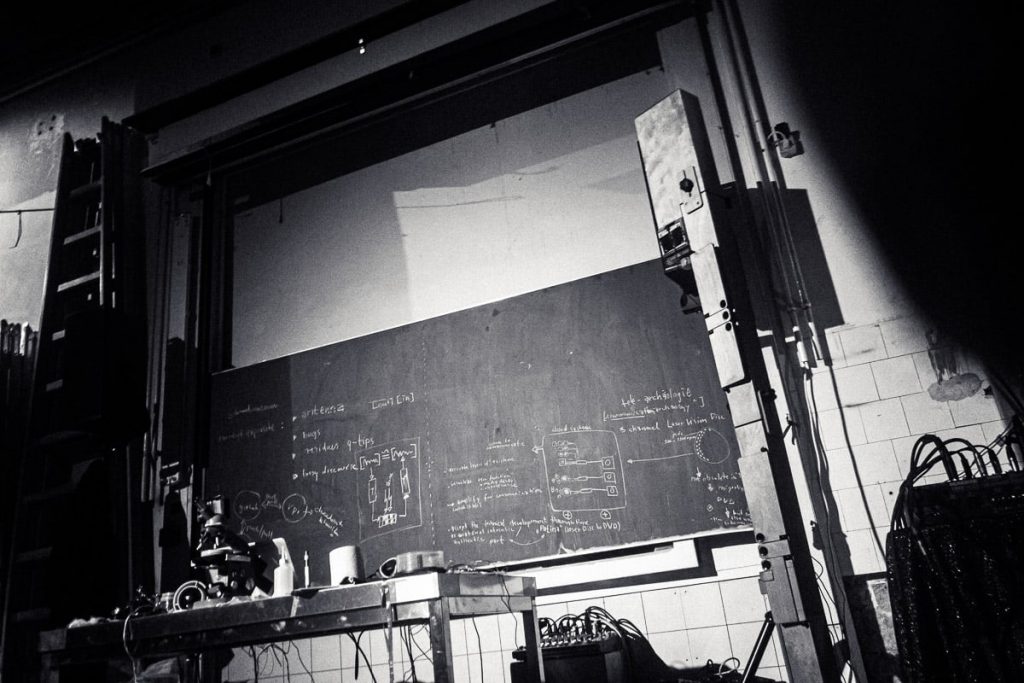
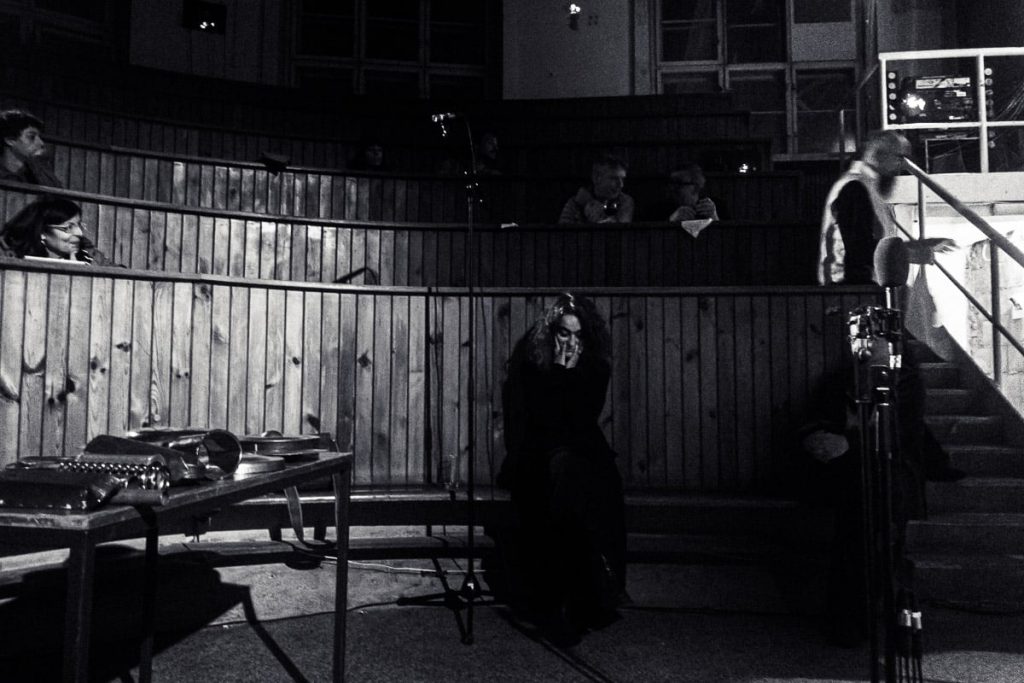
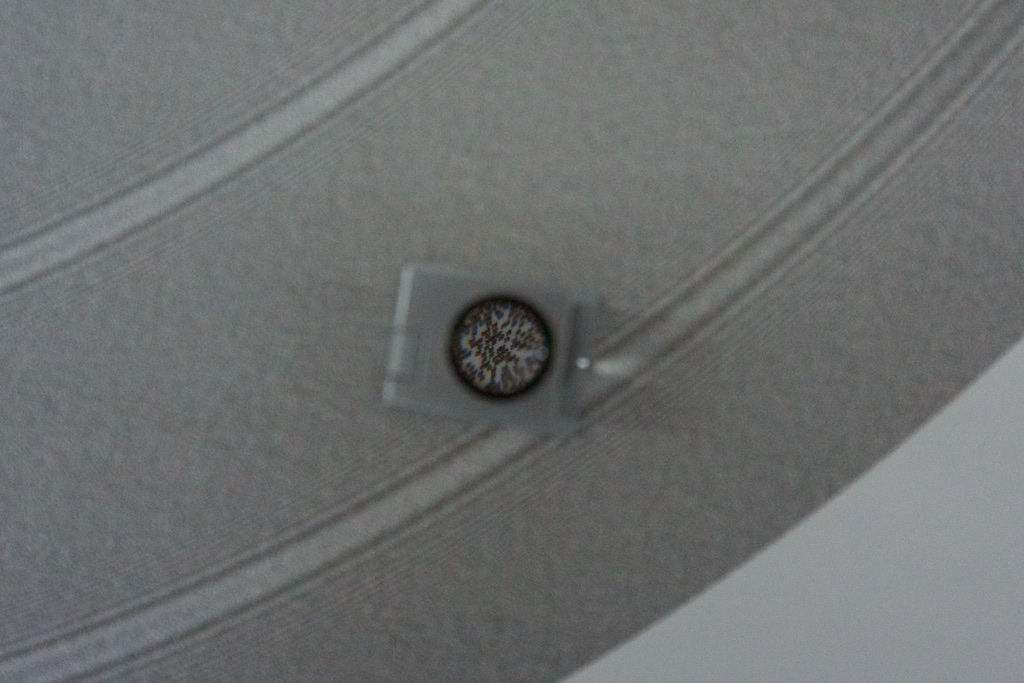
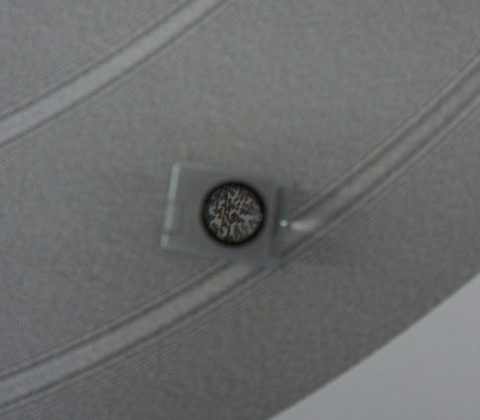
Reference Tone
by Thomas Grill, 2019
Sine tone 1 kHz @ -3 dBFS in 1 bit (DSD) audio encoding.
Representation as ink print on paper between acrylic glass.
This is a variation on the concept of the Midnight Song object as exhibited at the Auditorium of Rotting Sounds. In this case, the print embodies the representation of a pure sine tone represented as a high quality 1-bit audio encoding (DSD) at 2.8224 MHz sample rate. The bit stream is visualized as a spiral trail running from the center of the object to its outer rim. The object contains approximately 10 seconds worth of audio.

The above picture shows Reference Tone at its premiere at the UNDERSTANDING art & research exhibition in the Museum of Applied Arts (MAK) in Vienna. Placed at a transitory spot in the exhibition, the object (and with it the embedded sound) will only stay pure and perfect for a certain time. Already at the opening evening, stains and scratches on the surface were noticeable, by visitors accidentally or purposefully walking over the object. Over the duration of the exhibition of one month, the audio content will transform from a “reference tone” into a noisy sound being influenced by the context of its placement.
Exhibition opening: Understanding – Art and Research, MAK, June 27
The Rotting Sounds project has been invited to participate in the exhibition Understanding – Art and Research with a select object of our arts and research practice. We have produced the new object prototype “Reference Tone“, a variation on the existing object “Midnight Song“, exhibited at the Auditorium of Rotting Sounds.

Reference Tone is a printed representation of a pure sine tone of 1 kHz frequency at -3 dBFS volume. The encoding in 1 bit (DSD) audio is an ultra-high quality embodiment of the sound with the potential of being re-transferable into sound by optical means. Placed at a transitory spot in the exhibition, the object (and with it the embedded sound) will only stay pure and perfect for a certain time. Already at the opening, stains and scratches on the surface were noticeable, by visitors accidentally or purposefully walking over the object. Over the duration of the exhibition of one month, the audio content will transform from a “reference tone” into a sound being influenced by the context of its placement.
After the opening on June 27 at 7pm, the exhibition will run until July 28.
Museum of Applied Arts (MAK)
Stubenring 5, 1010 Wien, Austria
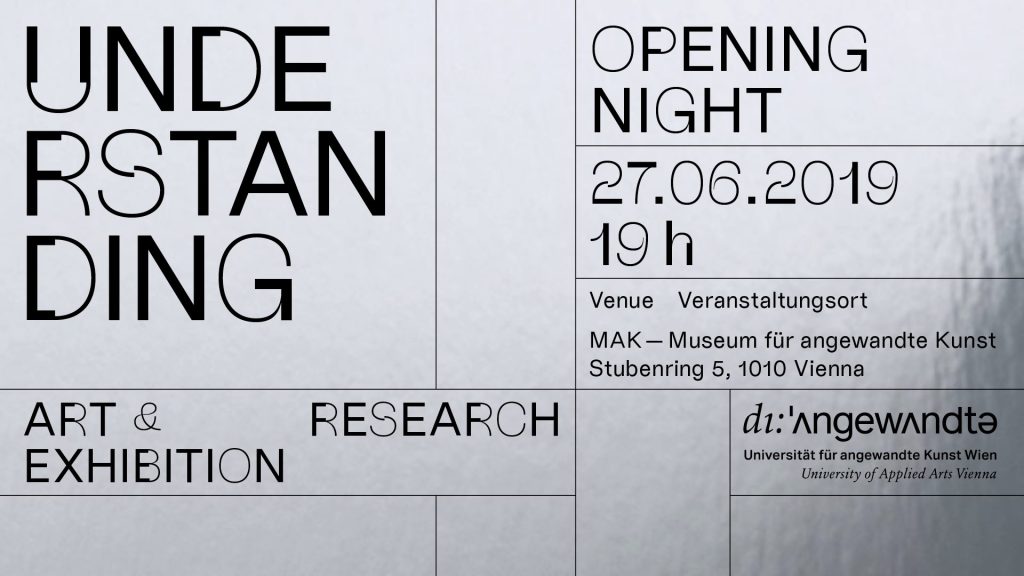
The University of Applied Arts Vienna presents exemplary approaches to its artistic research under the title UNDERSTANDING – ART & RESEARCH, it is about understanding as the very creative impulse. Through examples from research and teaching, science and art the transformation of society can be viewed, examined, sensed, discussed and experienced.
The exhibition UNDERSTANDING – ART & RESEARCH, developed by Gerald Bast, Alexander Damianisch and Barbara Putz-Plecko, now at MAK Vienna had first stations in New Zealand (Dunedin School of Art), Singapore (Nanyang Technological University Singapore), and Los Angeles (UCLA Art|Sci Center).
Printing new 1-bit audio object “Reference Tone”
For the upcoming exhibition UNDERSTANDING ART AND RESEARCH at the Museum of Applied Arts (MAK), we today printed the new prototypical audio object Reference Tone at the Digital Photography Lab at the University of Applied Arts.
It is a variation on the large-scale 1-bit audio print concept, similar to Midnight Song, as exhibited in our Auditorium of Rotting Sounds. Reference Tone represents a 1 kHz -3 dBFS sine tone at 44.1 kHz PCM sample rate, converted to a 1-bit DSD encoding with 64-times oversampling.
The director of the lab, Josef Schauer-Schmidinger supervised the printing of the 250 MB programmatically generated PDF file at 150 dpi bit structure size. The printed diameter of 100 cm contains approximately 30 Million bits, equivalent to about 10 seconds of very high quality audio.
Re-interpretation
Buffer Manipulations in Supercollider.
Recording of the live performance “Buffer Manipulation” by LFSaw (Till Bovermann) at the opening of the Auditorium of Rotting Sounds. Includes bonus track.
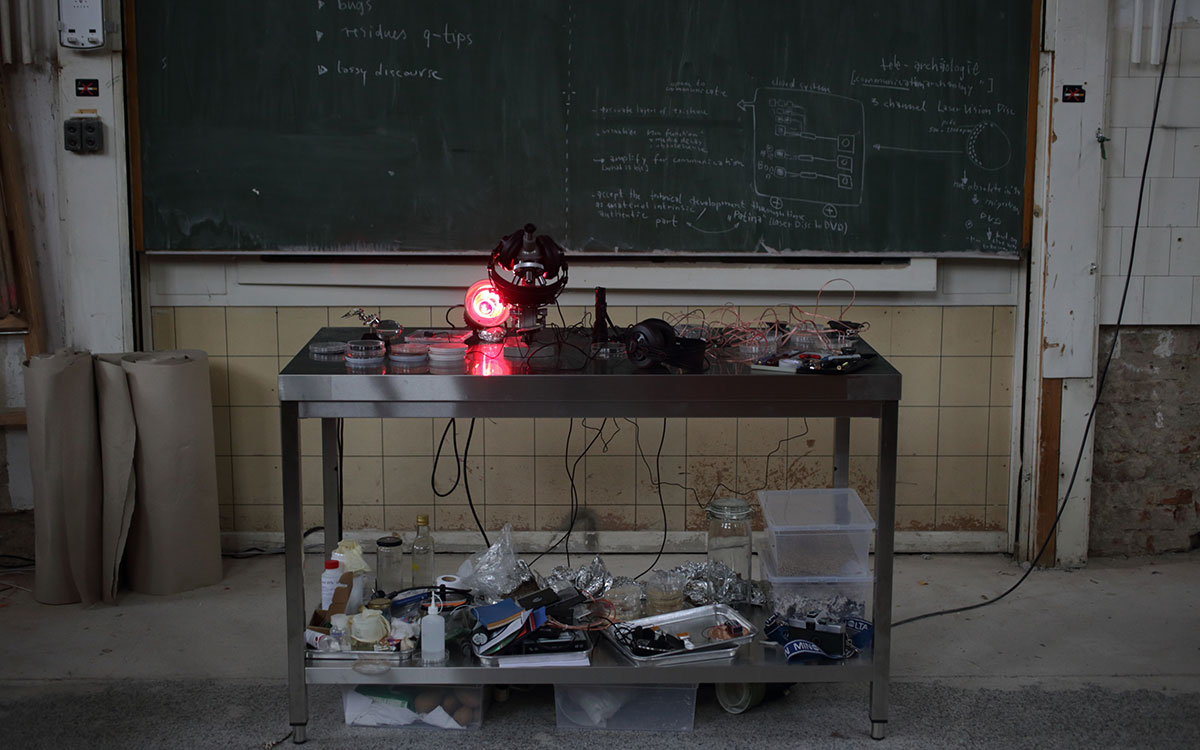
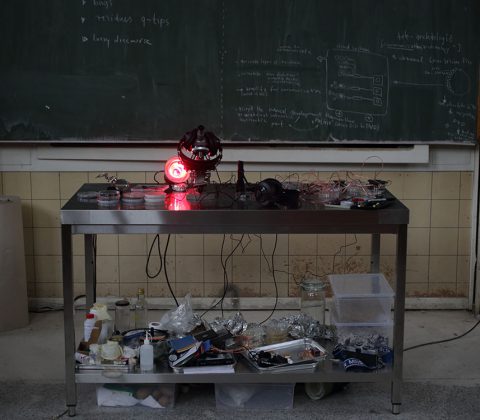
The Carrier
by Almut Schilling, 2019
Stainless steel table, microscope, rhyzopertha dominica, compact disc, digital audio tape, floppy disc, contact microphone, headphones, loudspeakers
Information can be understood as the conclusion of time, space and material. Represented by digital data information relies on a carrier to be processed, interpreted and stored. Depending on the logic of the carrier the bitstream (001101011…) needs to be transformed for burning, magnetising and electrifying. Listening to music through a magnetic tape (DAT) differs significantly from playing it with a CD or MP3 player. An information carrier does have a physical materiality, specific intrinsic properties which shape the sound, a characteristic noise, changing with time.
The data needs to be processed for interpretation through a signal chain of specific elements. Something like an ‘interpreter’ translates the bitstream. The MP3 player enables us to conceptually hear the sound. A bug (Rhyzopertha dominica) transforms the bits and BYTES just in another way, we might be able to learn to hear and understand? Let us mix up the conventional interpretational chain of digital sound processing. Let us hear the binary materiality, metal growing through oxidation, a cd interpreted by a bug, a MP3 file played through mould, heat and dust.
Archive
You can find archived sounds of the piece (1 min per hour) at the Rotting Sounds Archive.
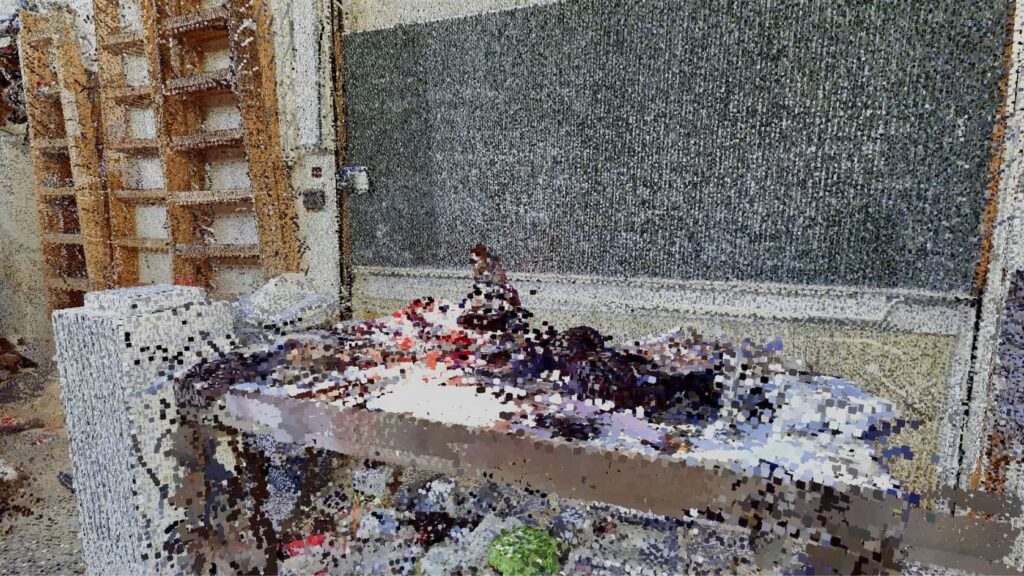
Phase Transitions
by Dario Sanfilippo, 2019
commissioned by rotting sounds
production by Thomas Grill
Electronics, algorithm, transducers, resonant bodies
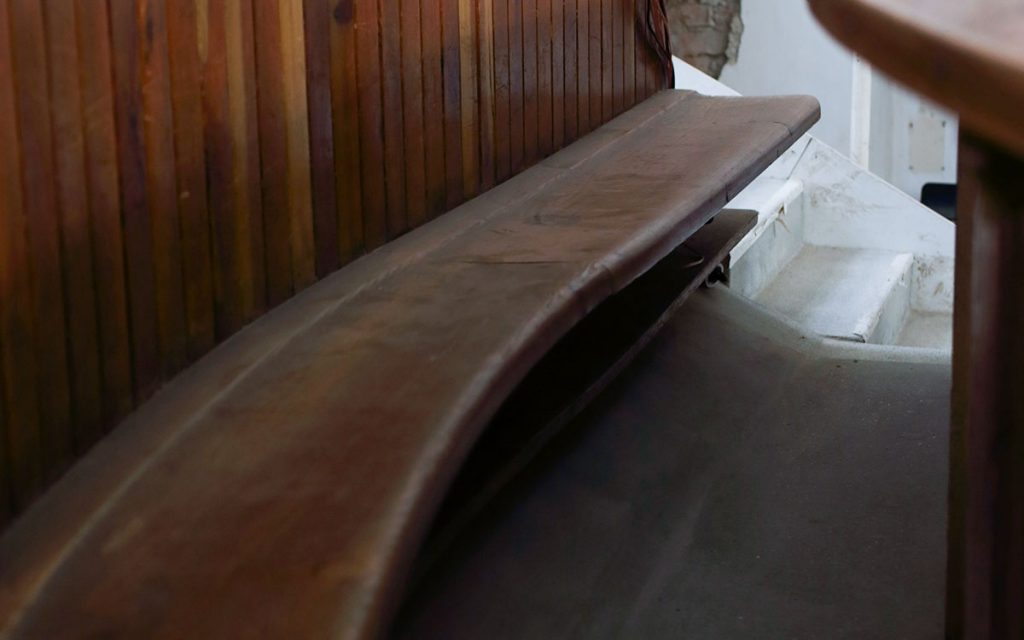
Phase Transitions is a long-form composition for an autonomous adaptive ecosystem operating in real-time which explores the idea of digital deterioration and the behavioural changes in dynamical systems with varying parameters. The work is based on feedback delay networks with nonlinear transfer functions, specifically, saturating units (also known as soft-clipping functions) whose purpose is to ensure stability in self-oscillating conditions but also to make the deterioration process possible.
Saturators transform signals so that amplitude values within a certain range are passed through almost untouched, while values outside that range are compressed never to exceed the limits of the saturators. The more the signals are far from the allowed range (so to speak), the more the signals are distorted (i.e., signals deteriorate), which results in more frequency components being added to the network.
The feedback coefficients determine how much of a signal is fed back into the network, while the lengths of the delay lines determine after how much time a signal will start to recirculate. The first parameter is responsible for the deterioration process as it affects the magnitude of the signals going through the saturators, which will also change the spectral output because of the added frequencies, while the second parameter is responsible for reinforcing or dampening specific frequencies in the spectrum. These are the two varying parameters in the system.
The delay lengths are chosen as powers of prime numbers. It is enough to know that that will favour a homogeneous distribution of the energy over the whole spectrum. The initial feedback coefficients correspond to the self-oscillating threshold of the network. It means that, after being initiated, the network could theoretically operate endlessly without any external energy being provided. In this case, the network is initially triggered by an ideally short impulse (a Dirac) that sets the system into an operating state, producing sparse tones.
The system is coupled with the environment through a microphone (input) and a resonating wooden bench (output). The signal from the microphone is processed so that some information is extracted and used to pilot the delay lengths. The analysis window of this process is one hour. It means that there is no immediate cause-effect relationship between what happens in the environment and the output of the system: theoretically, a perturbation in the environment will reach its maximum effect after one hour, but the system’s output is continuously affected by the past environmental conditions.
The feedback coefficients are set to grow of a magnitude of 2 in about three months. Roughly, that is the limit after which the saturators will be full and will have no further effect except producing broadband noise. That is indeed what sets the life span of the system.
A nonlinear system with several interacting feedback loops and varying parameters is expected to generate phase transitions. These are a radical change in the state of the system, and they show particularly rich and nontrivial dynamical behaviours. The last and perhaps most important aspect of the work is an adaptive mechanism for the growth of the feedback coefficients used to explore microscopically such behaviours: when a phase transition is detected, the feedback growth is radically decreased to almost freeze the current state variables until the transition is over. Interestingly, the detection process itself can either trigger or suppress a transition, resulting in a system that, by observing itself, will also affect its behaviour, which is what generates the formal development of the piece.
Archive
You can find archived sounds of the piece (1 min per hour) at the Rotting Sounds Archive.
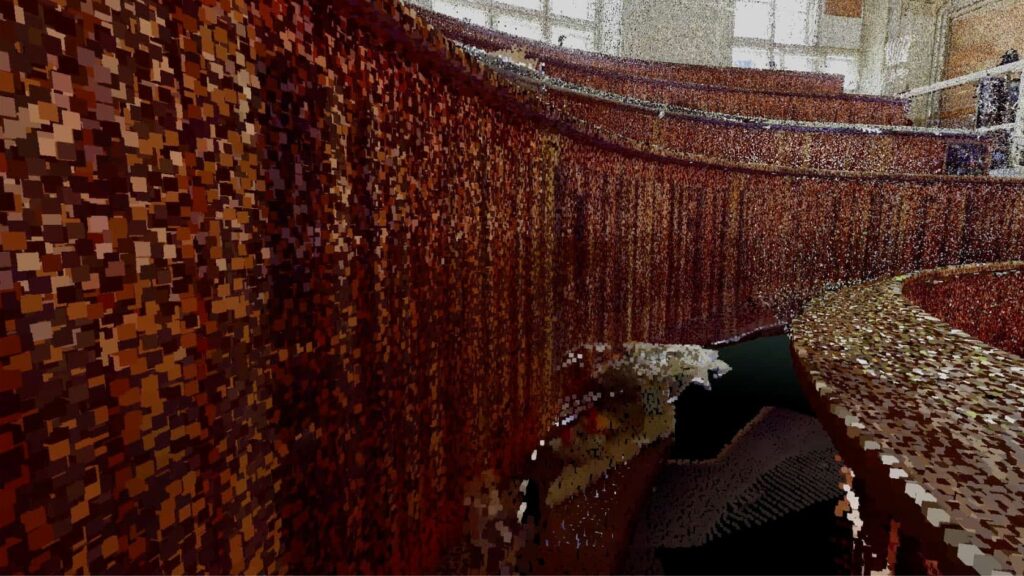
Fragments
by Tobias Leibetseder, 2019
commissioned by rotting sounds
Cardboard, paper, plastic, metal, waste of any kind, data, sound, video
The processual and constantly changing sculpture “Fragments” is in permanent development and consists of artefacts of the Rottings Sounds process. Waste, things collected, things stored and things put aside, texts, pictures, data, sounds etc. are the basis of the shape-changing work. Object or exhibition, museum or archive, collection or documentation are moments of intrinsic research and decomposition, accompanying the process and resting in the distant but immediate eye of the virtual observer.
Midnight song
by Thomas Grill, 2019
Ink print on paper, acrylic glass
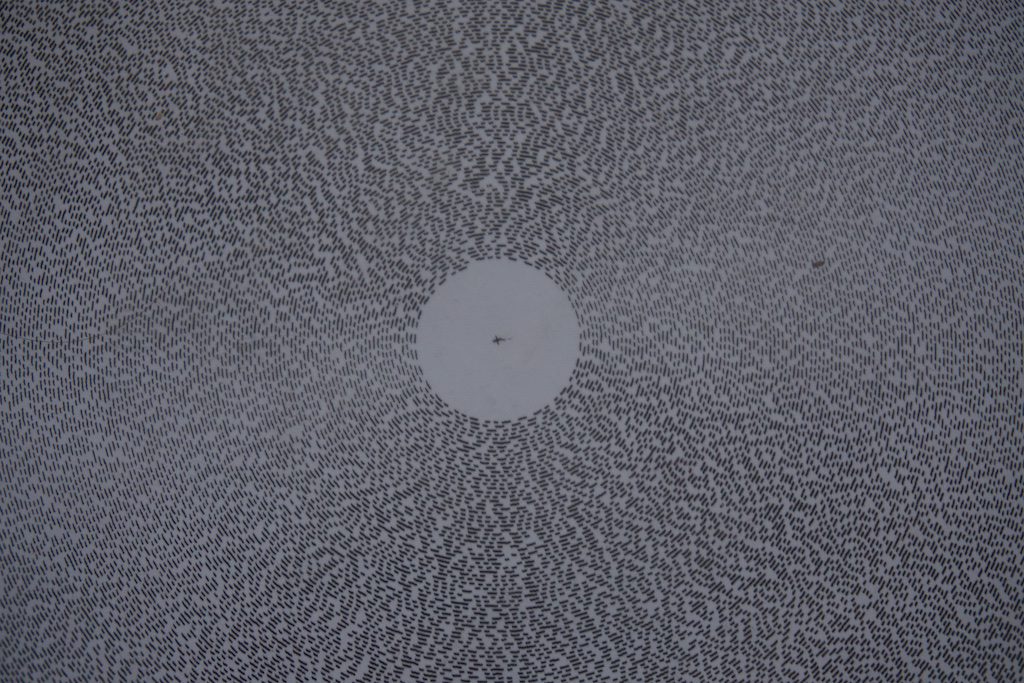
The work is a printed representation of the soundscape recorded at the auditorium at midnight of March 1st, 2019, the beginning of metereological spring. In the still of the night, a nightingale sings outside in the garden, its song leaking through the windows into the reverberant space of the auditorium.
The audio recording is in the form of a monophonic 1-bit encoding, a very high quality audio representation consisting of a stream of bits. The bit stream has been printed as a spiral of black and white segments, starting in the middle of the circle. It can be converted back to audio by a simple decoding process. However, imperfections in the print and through wear and dust on the acrylic glass will change the visual appearance over time, therefore also changing the audio content.
Enrichment and depletion
by Martin Howse, 2019
commissioned by rotting sounds
Custom electronics, radioactive material, ultraviolet light

Depleted uranium: a byproduct of enrichment used as armour plating and armour penetrating projectile. Biological/radioactive half-life: 15 days/4.468 billion years respectively.
Enriched uranium: a type of uranium in which the percent composition of uranium-235 has been increased through a process of isotope separation. Uranium is enriched to fuel nuclear power generation and for military nuclear weapons use.
/Enrichment and depletion/ attempts the simple digital play back of the mineral or lithic, the sucking stone tapes, in order to enter into deeper times of the geologic and of media sedimentation
We wish to play back a clear instance of decay and dissolution, of the loss of energy and identity enacted by radioactive decay. Forms of playback can equally be considered as engaging in material and informatic decay or deterioration. Magnetic tapes are ground down and eroded geologically by the repeated application of the read head, memory bits must be energetically reset as they are destroyed by a digital readout, paper and ink are worn thin on repeated readings.
And in the moment of their capture by instrumentation, through their observation, the energies of the cosmos are consumed; they die out.
/Enrichment and depletion/ sets out to replace the oracular and significant writing of the stones, the ghostly stone tape with its geological palimpsest, with a clear and meaningless output of planetary depletion, only the earth and universe in dissolution.
Any atomic or sub-atomic change within materials implies a nuclear transmutation. Radioactive decay, also known as nuclear decay or radioactivity, is the process by which a nucleus of an unstable atom loses energy by emitting ionizing radiation. A material that spontaneously emits this kind of radiation – which includes the emission of alpha particles, beta particles, and gamma rays – is considered radioactive.
Radioactive minerals containing uraninite and sprouting yellow and green crystals of autunite and meta-autunite, sourced from sites of cold war uranium mining in Germany’s Erzgebirge region, are placed next to a geiger counter tube. Each local decay event delivers a pulse which is subsequently stretched and treated as a one bit sample. A single pulse within a time frame (a sample rate of twice the average counts per second) is treated as a one, an absence as a zero. These single bits are collected in a circular buffer, cycled through and played back at a higher rate as a one bit encoded audio stream. New bits are slowly added to the circular buffer as they are read in. It’s a repeating rocky tape loop.
The interval between these detected decay events or bits presents a high entropy source of randomness. Although we know that in 4.5 billion years half of the stock of uranium-238 atoms will have decayed into thorium-234, we have no way of knowing exactly when an atom will decay, producing as part of this energetic transformation a beta particle which will strike the geiger tube and trigger a bit count.
Given the half life of the isotopes within the active material (Uranium-238 and Uranium-235) /Enrichment and depletion/ will emit quite a different recording or playback in perhaps a few billion years.
Archive
You can find archived sounds of the piece (1 min per hour) at the Rotting Sounds Archive.
